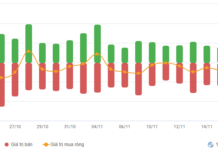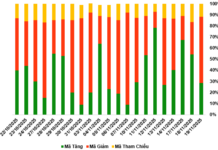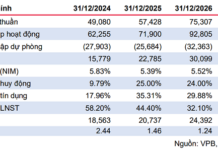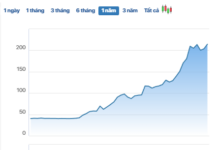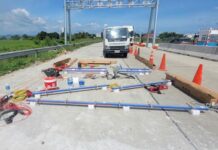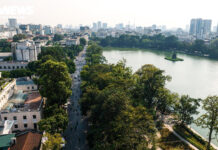The Department of Planning and Architecture has recently submitted a report to the Ho Chi Minh City People’s Committee regarding the progress and planning direction for 19 old apartment buildings across the city.
Among these, 9 apartments have been inspected and deemed unsafe, requiring relocation and demolition, but the process remains incomplete. These include Apartment 47 Long Hưng (Tân Sơn Nhất Ward) and Apartment 40/1 Tân Phước (Tân Hòa Ward). In 2022, the Department of Planning and Architecture urged the former Tân Bình District People’s Committee to review and propose adjustments to the 1/2000 zoning plan to attract investment, as directed by the Ho Chi Minh City People’s Committee.
Apartment 170-171 Tân Châu Street (Tân Hòa Ward) has been repurposed for educational use, housing the second campus of Trần Văn Ơn Elementary School. For Apartment 155-157 Bùi Viện Street (Bến Thành Ward), the Ho Chi Minh City People’s Committee approved adjustments to the 1/2000 detailed urban planning project (zoning plan) for the 930-hectare existing city center area, specifically block S6.
Regarding Apartment 11 Võ Văn Tần Street (Xuân Hòa Ward), the Department of Construction recommended excluding it from the list of pre-1975 buildings slated for renovation, relocation, and demolition.
For 4 apartments—Trúc Giang (Xóm Chiếu Ward), Vĩnh Hội (Blocks A, B, C in Khánh Hội Ward), old Tôn Thất Thuyết (Blocks A, B, C in Khánh Hội Ward), and old Hoàng Diệu (Block Y in Khánh Hội Ward)—the Department of Planning and Architecture has approved the outline and budget for adjusting the 1/2000 detailed urban planning project for the inter-ward residential area. The Ward People’s Committee is responsible for organizing, reviewing, and approving these plans as required.

Ho Chi Minh City (formerly Saigon) has 474 apartment buildings with 573 pre-1975 units that are dilapidated and unsafe.
The remaining 10 projects have not yet been inspected for relocation and demolition but must undergo urban beautification and new construction.
The Ngô Gia Tự apartment complex (Vườn Lài Ward) has demolished one block but has not yet relocated or demolished the remaining blocks or solicited investment. The Vườn Lài Ward People’s Committee is currently preparing a 1/500 detailed planning project as required.
For the other 9 complexes, planning and architectural indicators for the renovation and replacement of pre-1975 apartments will be considered during the development of relevant zoning plans.
According to the Department of Construction, Ho Chi Minh City has 474 apartment buildings with 573 pre-1975 units that are dilapidated and unsafe. These include 16 Grade D (dangerous) buildings, 116 Grade C (potentially dangerous) buildings, 332 Grade B (unsuitable for normal use) buildings, and 12 structures that have been demolished or repurposed. To date, 5 Grade D buildings have been completely demolished, and 6 others have also been removed.
Earlier this year, the Ho Chi Minh City People’s Committee approved a plan to renovate and rebuild dilapidated pre-1975 apartment buildings.
The city aims to complete preparatory work for renovating and rebuilding pre-1975 apartments and those built between 1975 and 1994 by 2030. It also plans to complete repairs, upgrades, and reinforcement of Grade B and C pre-1975 buildings.
For the 16 Grade D buildings, the city aims to complete new construction for 7 severely damaged, dangerous pre-1975 buildings, as well as 9 others and any additional Grade D buildings. It also plans to complete repairs, upgrades, and reinforcement of Grade B and C buildings constructed between 1975 and 1994.
By 2035, Ho Chi Minh City aims to complete the renovation and rebuilding of all pre-1975 apartments, as well as severely damaged, dangerous, or expired Grade D buildings constructed between 1975 and 1994.
Urgent Relocation and Demolition Ordered for 9 Aging Apartment Complexes in Ho Chi Minh City Following Safety Inspections
The Ho Chi Minh City Department of Planning and Architecture has submitted a report to the People’s Committee of Ho Chi Minh City outlining the progress and planning directions for 19 aging apartment complexes across the city.
Vietnam’s TOD Urban Revolution: Unlocking the Potential of Next-Gen Megacities
The Transit-Oriented Development (TOD) model is an essential strategy for creating modern, sustainable living spaces and addressing land scarcity in major urban areas, particularly in Ho Chi Minh City. By integrating urban development with public transportation, TOD fosters efficient land use, reduces congestion, and enhances quality of life, making it a cornerstone for future-proof cities.
Why Do the Elite Opt for One Luxury Central Residence Over Multiple Suburban Properties?
As Thu Thiem emerges as a global financial hub, it serves as a powerful catalyst, not only expanding the city’s spatial boundaries but also magnetizing the residential demands of the affluent elite.


